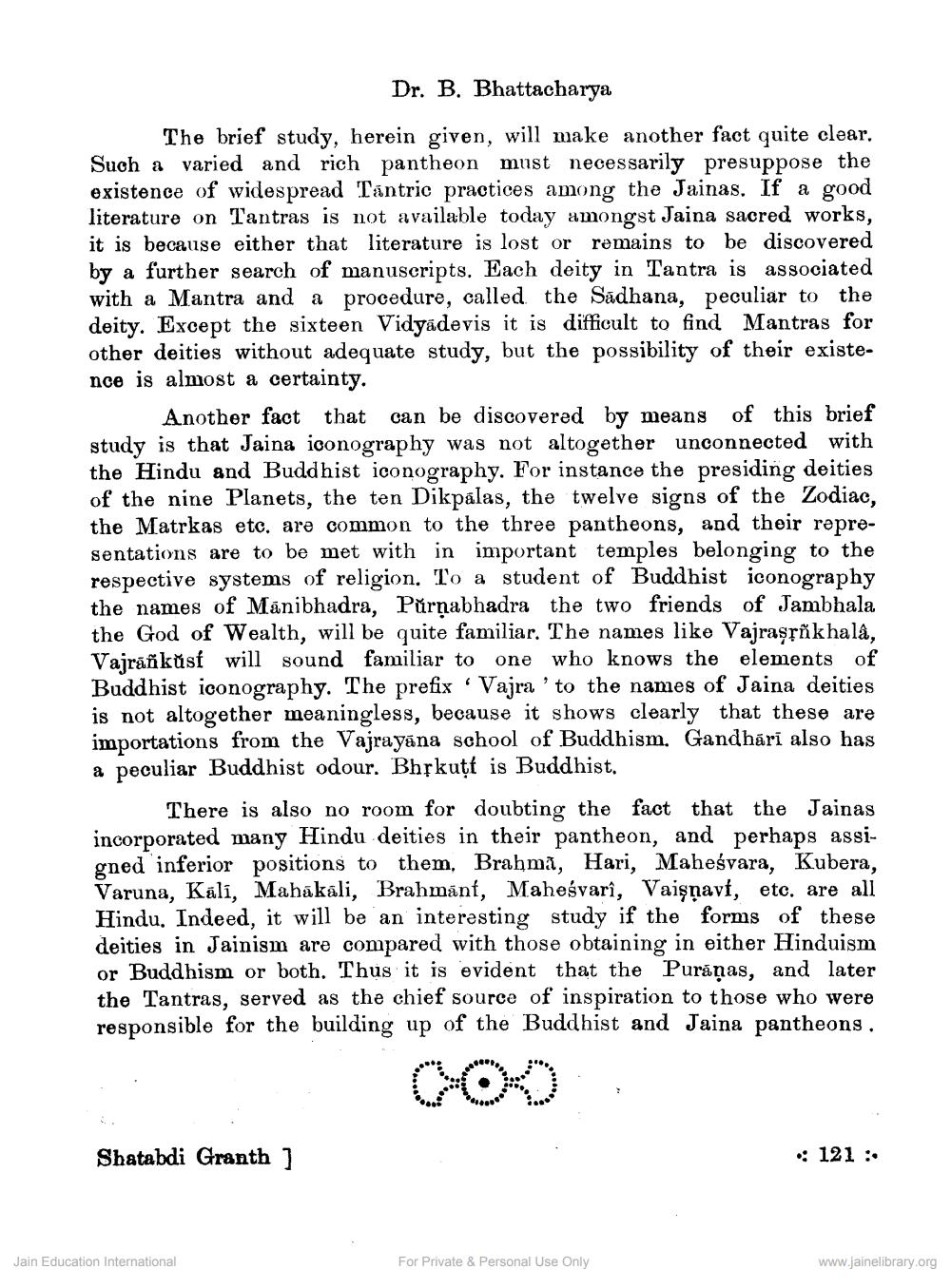________________
Dr. B. Bhattacharya
The brief study, herein given, will make another fact quite clear. Such a varied and rich pantheon must necessarily presuppose the existence of widespread Tantric practices among the Jainas. If a good literature on Tantras is not available today amongst Jaina sacred works, it is because either that literature is lost or remains to be discovered by a further search of manuscripts. Each deity in Tantra is associated with a Mantra and a procedure, called the Sadhana, peculiar to the deity. Except the sixteen Vidyadevis it is difficult to find Mantras for other deities without adequate study, but the possibility of their existence is almost a certainty.
Another fact that can be discovered by means of this brief study is that Jaina iconography was not altogether unconnected with the Hindu and Buddhist iconography. For instance the presiding deities of the nine Planets, the ten Dikpalas, the twelve signs of the Zodiac, the Matrkas etc. are common to the three pantheons, and their representations are to be met with in important temples belonging to the respective systems of religion. To a student of Buddhist iconography the names of Manibhadra, Půrnabhadra the two friends of Jambhala
of Wealth, will be quite familiar. The names like Vajraşrñk hala, Vajráňkůst will sound familiar to one who knows the elements of Buddhist iconography. The prefix. Vajra 'to the names of Jaina deities is not altogether meaningless, because it shows clearly that these are importations from the Vajrayāna school of Buddhism, Gandhari also has a peculiar Buddhist odour. Bhskutt is Buddhist.
There is also no room for doubting the fact that the Jainas incorporated many Hindu deities in their pantheon, and perhaps assigned inferior positions to them, Brahma, Hari, Maheśvara, Kubera, Varuna, Kālī, Mahākāli, Brahmánt, Maheśvarî, Vaişņaví, etc. are all Hindu. Indeed, it will be an interesting study if the forms of these deities in Jainism are compared with those obtaining in either Hinduism or Buddhism or both. Thus it is evident that the Purăņas, and later
Tantras, served as the chief source of inspiration to those who were responsible for the building up of the Buddhist and Jaina pantheons.
Shatabdi Granth ]
• 121 ::
Jain Education International
For Private & Personal Use Only
www.jainelibrary.org




